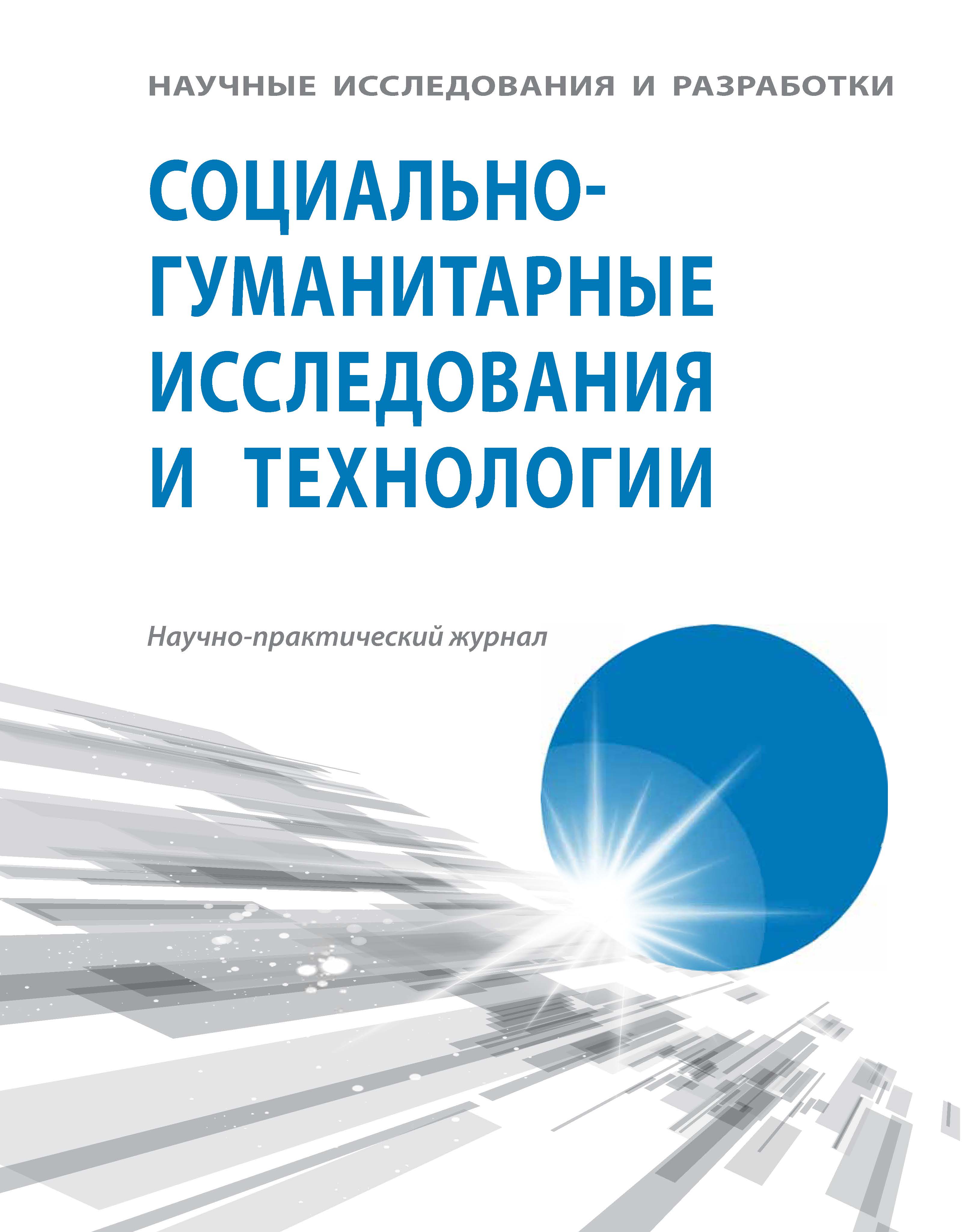Nizhniy Novgorod, Nizhny Novgorod, Russian Federation
Nizhniy Novgorod, Nizhny Novgorod, Russian Federation
This article attempts to summarize the existing interpretations of the phenomenon of the funeral of laughter as an archaic element folk culture. The authors give a critical assessment of the scientific theories of the origin and functioning of the demonstrations of the funeral laughter in the social practices, so in the framework of the topic not only the funeral rituals are considered, but also Slavic holidays (Christmastide, Maslenitsa, etc.), as well as the "game in the deceased", in particular, at the wedding; i.e. a wide range of the phenomena of a peasant culture is covered, where the facts of having a funeral laughter were noticed. In opinion of the authors, the phenomenon is polyfunctional and it is not productive to restrict the interpretation by an adaptively recreational value: the psychological aspect of the review must be correlated with the sacral-mystical and onto-existential incisions of the analysis. The issue of article requires going to the primary (schematic) analysis of such key existential thing as death. The starting thesis in this text it should be recognized the following: the event and the image of death in the folk consciousness that is significantly different from the accumulations in the area of the high culture. In this context the phenomenon of the funeral laughter (in its initial meaning it was not sacrilegious as it might seem today) gives an opportunity to expand significantly the submission about the essence of the Slavs’ conception of the "life-death" cycle.
Funeral laughter; death; celebration; ceremony; ritual; invectives; folk culture.
Народная культура — фундамент, на котором формируется национальное самосознание и ценностно-нормативная система жизнедеятельности социума, зачастую народная культура выступает скрепой отдельных этнических организмов в рамках государственного образования, поэтому интерес к исследованию народной культуры — особенно в периоды общественных преобразований и цивилизационных сдвигов — вряд ли будет ослабевать.
1. Bernshtam T.A. Fenomen «smeh-plach» v russkoj narodno-pravoslavnoj kul'ture [Phenomenon "laughter crying" in the Russian national and orthodox culture]. Hristianstvo v regionah mira [Christianity in the regions of the world]. St. Petersburg, Nauka Publ., 2008, I. 2, pp. 298-376. (in Russian)
2. Veleckaja N.N. Jazycheskaja simvolika slavjanskih arhaicheskih ritualov [Pagan symbolics of Slavic archaic rituals]. Moscow, Nauka Publ., 1978. 160 p. (in Russian)
3. Volkov F. Jetnograficheskie osobennosti ukrainskogo naroda [Ethnographic features of the Ukrainian people]. Ukrainskij narod v ego proshlom i nastojashhem [The Ukrainian people in its past and present]. St. Petersburg, «Obshhestvennaja pol'za» Publ., 1916, V. 2, 714 p. (in Russian)
4. Gindin L.A. Obrjad pogrebenija Atilly i «trizna» Ol'gi po Igorju [Ceremony of burial of Atilla and Olga's "funeral feast" according to Igor]. Balto-slavjanskie jetnokul'turnye i arheologicheskie drevnosti. Pogrebal'nyj obrjad. Tezisy dokladov [Balto-Slavic ethnocultural and archaeological antiquities. Funeral rite. Theses of reports]. Moscow, 1985, pp. 30-33. (in Russian)
5. Zhel'vis V.I. Pole brani: Skvernoslovie kak social'naja problema v jazykah i kul'turah mira [Battlefield: Foul language as a social problem in languages and cultures of the world]. Moscow, 2001. 352 p. (in Russian)
6. Zelenin D.K. Izbrannye trudy. Ocherki russkoj mifologii: Umershie neestestvennoju smert'ju i rusalki. (Tradicionnaja duhovnaja kul'tura slavjan. Iz istorii izuchenija) [Chosen works. Sketches of the Russian mythology: Died unnatural death and mermaids (Traditional spiritual culture of Slavs. From studying history)]. Moscow, Indrik Publ., 1995. 432 p. (in Russian); EDN: https://elibrary.ru/RDWKTD
7. Kozincev A. Fenomen «smeh-plach»: o razlichii shodnogo [Phenomenon "laughter crying": about distinction of similar]. Antropologicheskij forum on-line 2010 [Anthropological Forum on-line 2010]. I. 13, pp. 117-124. Available at: http://anthropologie.kunstkamera.ru/files/pdf/013online/13_online_kozintsev.pdf (accessed 12 November 2016). (in Russian); EDN: https://elibrary.ru/MOMRQX
8. Kozincev A.G. Chelovek i smeh [Person and laughter]. St. Petersburg, Aletejja Publ., 2007. 235 p. (in Russian); EDN: https://elibrary.ru/QJBDLT
9. Kotljarevskij A.A. O pogrebal'nyh obychajah jazycheskih slavjan [About funeral customs of pagan Slavs]. Moscow, 1868. 290 p. (in Russian)
10. Korneljuk K.S. Nekotorye cherty tradicionnogo pogrebal'nogo obrjada sela Andronovo (Kobrinskij r-on Brestskoj obl.) [Some lines of a traditional funeral ceremony of the village of Andronovo (Kobrinsky area of the Brest Region)]. Balto-slavjanskie jetnokul'turnye i arheologicheskie drevnosti. Pogrebal'nyj obrjad. Tezisy dokladov [Balto-Slavic ethnocultural and archaeological antiquities. Funeral rite. Theses of reports]. Moscow, AN SSSR Publ., 1985. 130 p. (in Russian)
11. Lashhenko S.K. Zakljatie smehom: opyt istolkovanija jazycheskih ritual'nyh tradicij vostochnyh slavjan [Paternoster laughter: experience of interpretation of pagan ritual traditions of east Slavs.]. Moscow, Ladomir Publ., 2006. 316 p. (in Russian)
12. Lotman Ju.M., Uspenskij B.A. Novye aspekty izuchenija kul'tury Drevnej Rusi [New aspects of studying of culture of Ancient Russia]. Voprosy literatury [Questions of literature]. 1977, I. 3, pp. 148-166. (in Russian)
13. Makarij, patriarh Antiohijskij. Puteshestvie v Rossiju [Travel to Russia]. Moscow, 1898, I. 4, 125 p. (in Russian)
14. Matlin G.M. Svadebnaja igra v «pokojnika»: k probleme genezisa smehovyh form v russkoj tradicionnoj svad'be [Wedding game in "dead man": to a problem of genesis of humorous forms in the Russian traditional wedding]. Sbornik konferencij NIC Sociosfere [Conference Collection SIC]. 2013, I. 39, pp. 128-142. (in Russian); EDN: https://elibrary.ru/RIWPTN
15. Nehristianskie pominki [Non-Christian commemoration]. Rukovodstvo dlja sel'skih pastyrej [A Guide for Rural Shepherds]. V. 1, I. 6, 1863, pp. 177-180. (in Russian)
16. Propp V.Ja. Russkie agrarnye prazdniki: (Opyt istoriko-jetnograficheskogo issledovanija) [Russian agrarian holidays: (Experience of a historical and ethnographic research)]. St. Petersburg, Azbuka Publ., 1995. 176 p. (in Russian)
17. Puteshestvie Ibn-Fadlana na Volgu [Ibn-Fadlan's travel to Volga]. Moskow-Leningrad, Akademia nauk SSSR Publ., 1939. 196 p. (in Russian)
18. Frejdenberg O.M. Mif i literatura drevnosti [Myth and literature of antiquity]. Moscow, Nauka Publ., 1978. 608 p. (in Russian); EDN: https://elibrary.ru/QZNJXX
19. Shmeleva N.V., Karavashkina N.E. Voploshhenie idej voobrazhaemoj smerti v sovremennoj kul'ture [The embodiment of the ideas of the imagined death in modern culture]. Simvol nauki [Symbol of Science]. 2015, I. 6, pp. 352-355. (in Russian); EDN: https://elibrary.ru/UAWRTV
20. Shmeleva N.V. Obraz smerti v amerikanskom postapokalipticheskom amerikanskom kino i kino apokalipticheskoj tematiki [Image of death in the American post-apocalyptic American cinema and cinema of apocalyptic subject]. Mezhdunarodnyj zhurnal issledovanij kul'tury [International Journal of Cultural Research]. 2016, I. 1, pp. 122-129. (in Russian); EDN: https://elibrary.ru/VWOJOT






